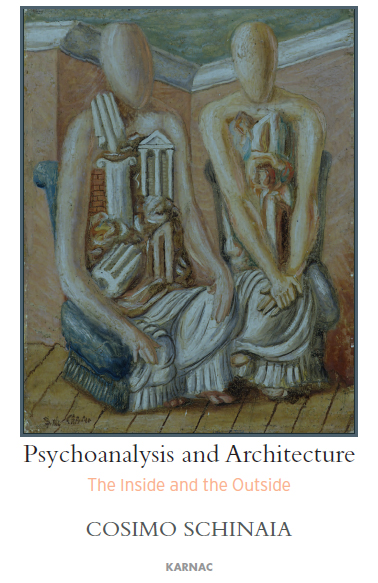 Psychoanalysis and Architecture: The Inside and the Outside, by Cosimo Schinaia
Psychoanalysis and Architecture: The Inside and the Outside, by Cosimo Schinaia
Sabbadini A., Psychoanalysis and Architecture: The Inside and the Outside by Cosimo Schinaia. Published by Karnac, London, 2016; 296 pp, British Journal of Psychotherapy, 33, 1: 136-138, February,2017 http://onlinelibrary.wiley.com/doi/10.1111/bjp.12274/full
This book explores how psychoanalysis and architecture can enhance and increase the chances of mental ‘containment’, while also fostering exchange between inside and outside. The way in which psychoanalysts take care of mental suffering, and the way in which architects and city planners assess the environment, are grounded in a shared concern with the notion of ‘dwelling’. It is a matter of fact that dwelling exists in a complex context comprised of both biological need and simboli function. Psychoanalysis and architecture can work together in both thinking about and designing not only our homes but also the analysts’ consulting rooms and, more generally, our therapy places. However, this can occur only if they are able to give up the current restricted model of their interaction and thus propose a more harmonic way to deal with the questions asked by their clients. Creating sustainable and integrative relationships with the buildings within which we live everyday – whether they are our houses, public buildings (such as schools and prisons), or therapeutic spaces (hospitals, clinics, and consulting rooms) – can be a measure both of the degree of the advancement of a society and of the quality of its institutions.
'Metaphors of restoration or of moving house are often present during analysis to convey the idea of profound changes in the patient’s emotional life. In this fine book, the author goes further, finding in “creativity” the common denominator of psychoanalysis and architecture. These two “sciences” continually cross over into art. The office of a psychoanalyst and the office of an architect are constantly called upon to become ateliers of transformations and inventive dwellings in the internal and external world. This book opens a door to new adventures of the mind. Definitely not to be missed.’
Antonino Ferro, author of The Analytic Field and its Transformations
Forewords by Esther Sperber, Architect in New York and Enrico Pinna, Architect in Genoa and afterword by Stephen M. Sonnenberg, psychoanalyst in Austin (Texas).

